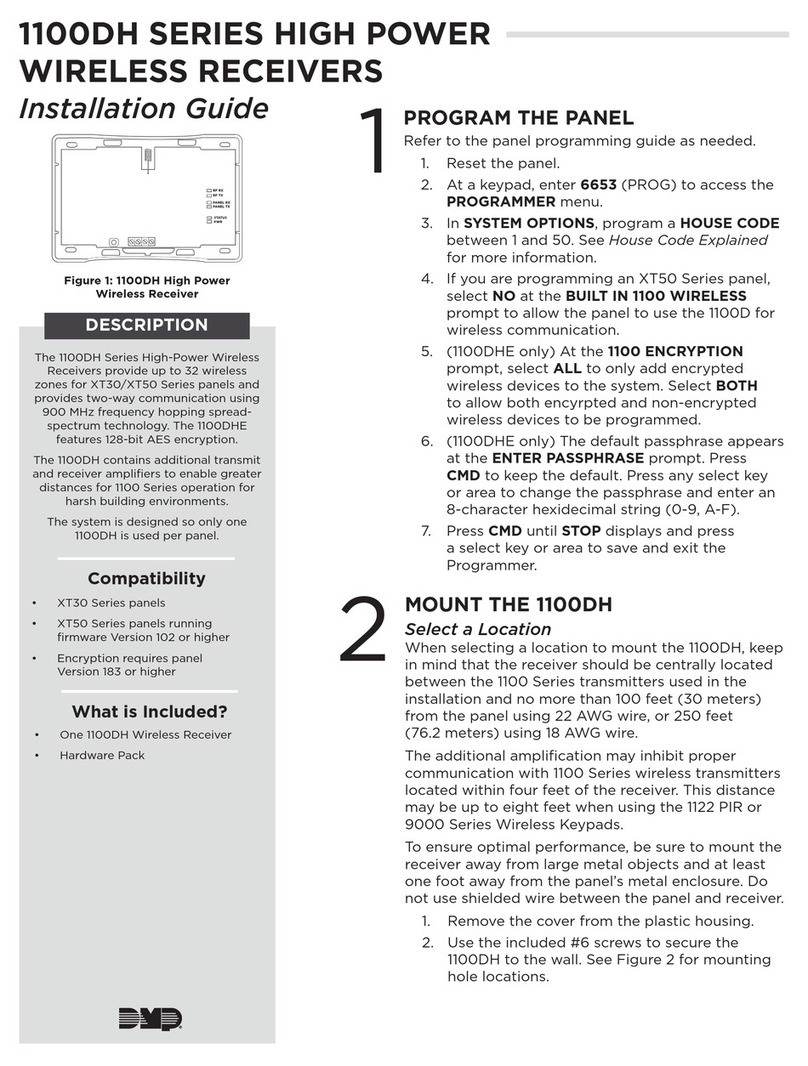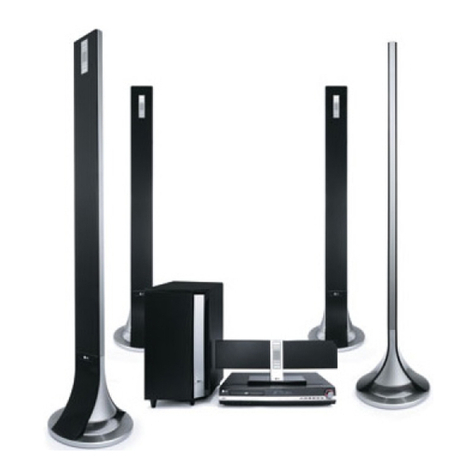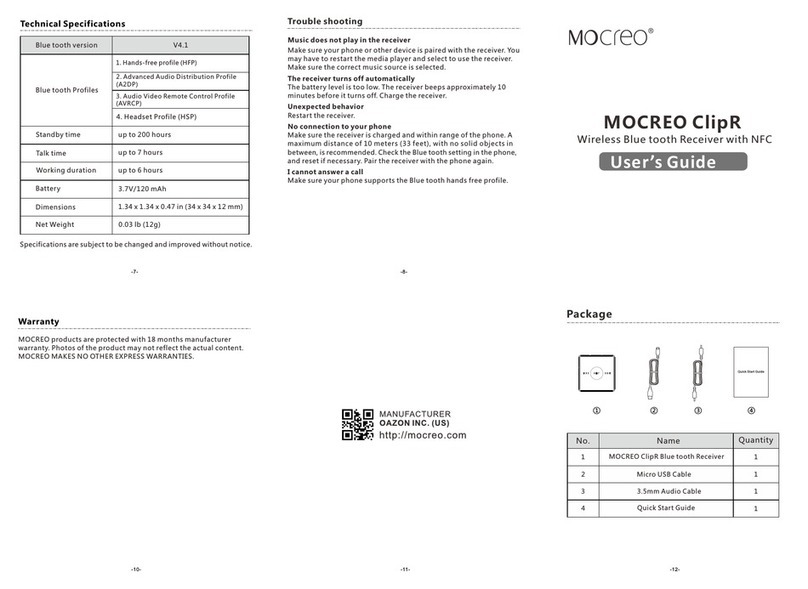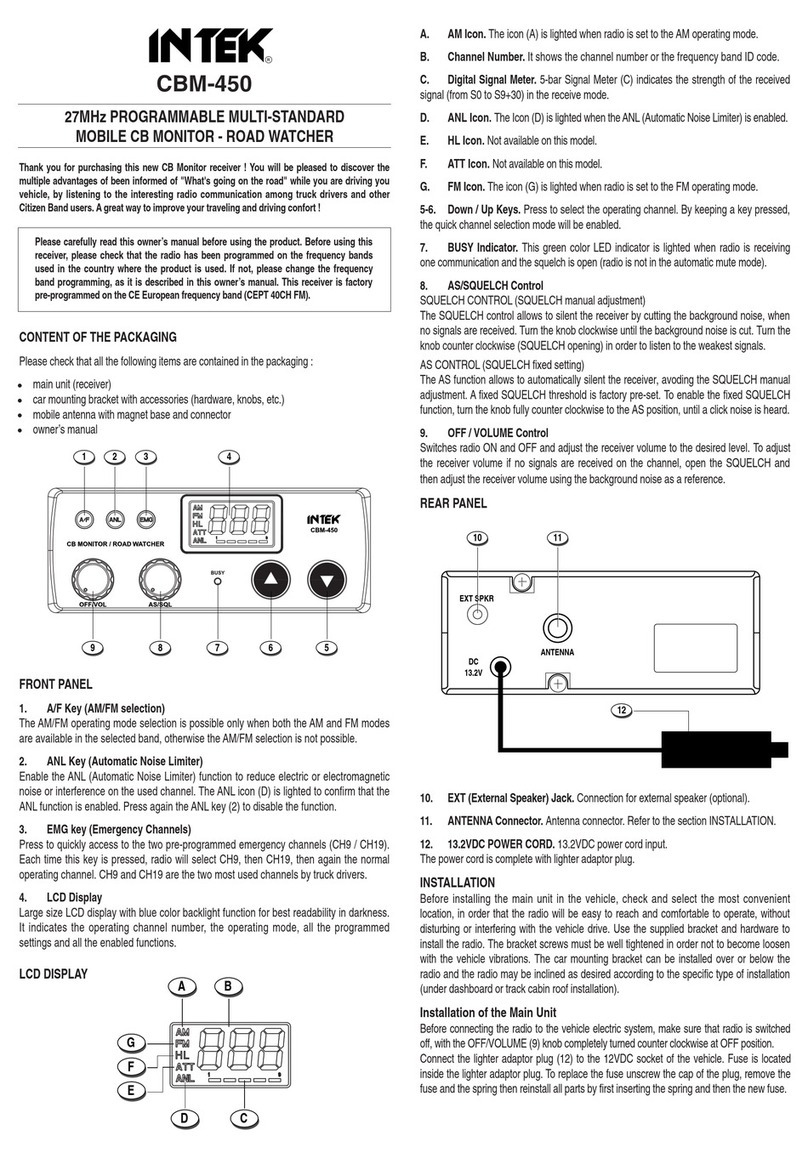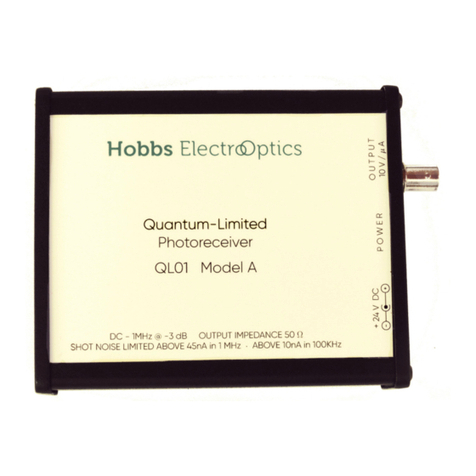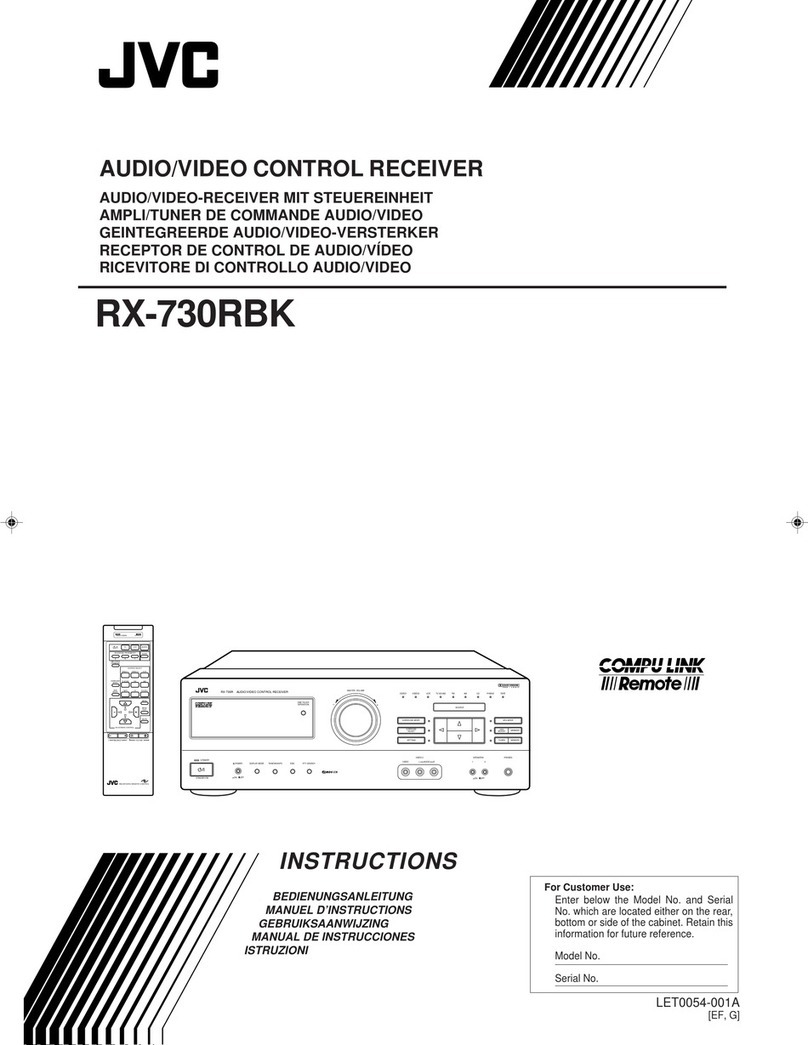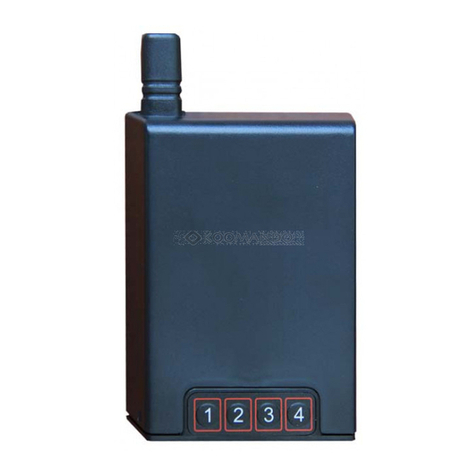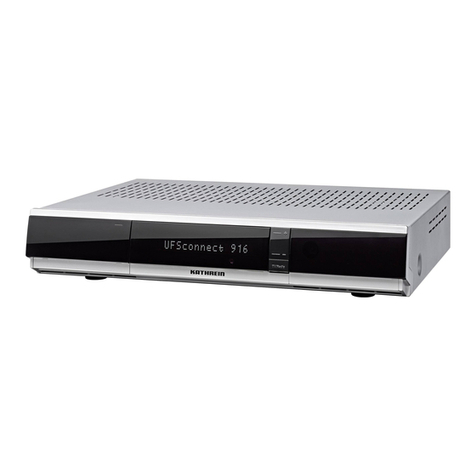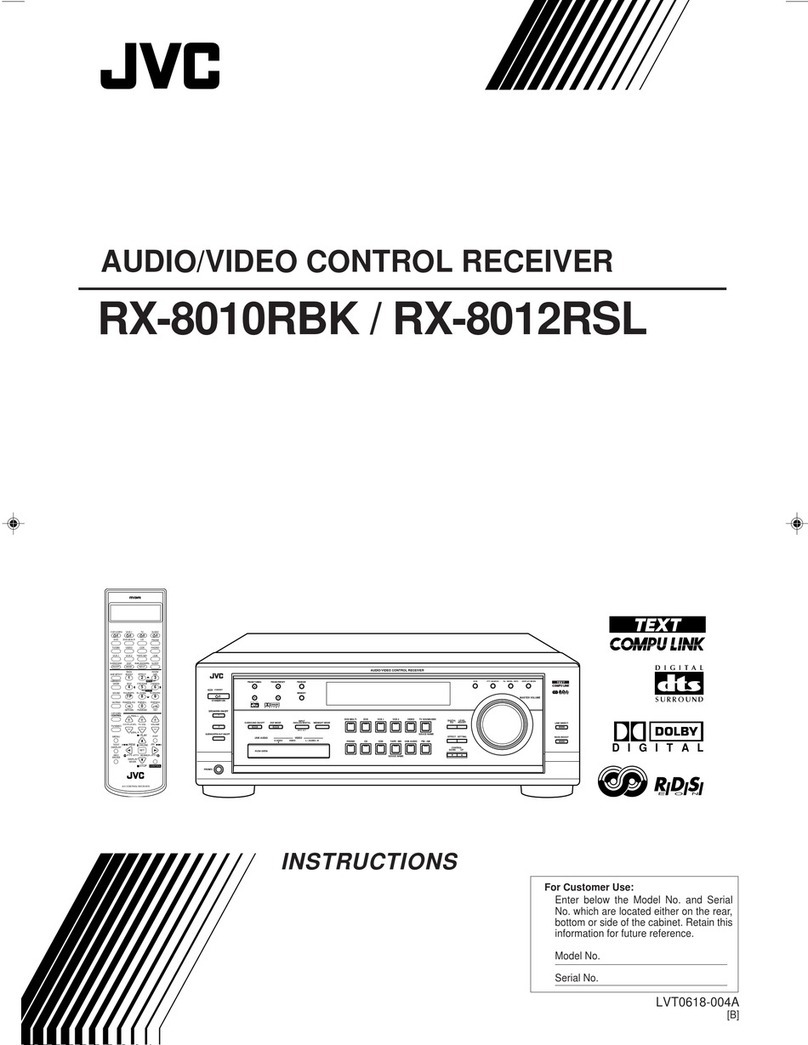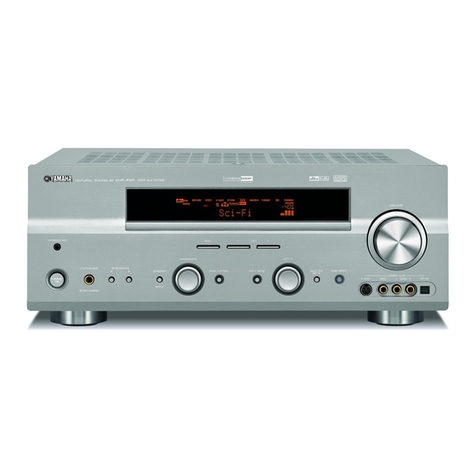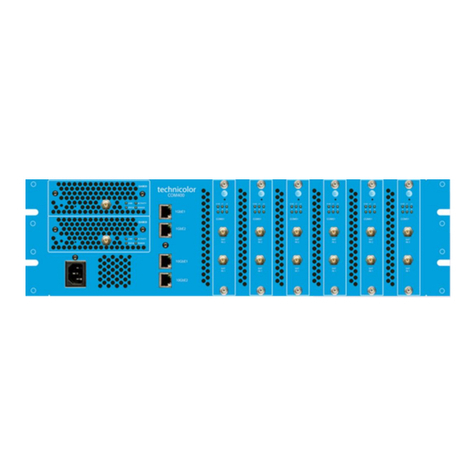Bookham New Focus 2051 User manual

-~
ARTISAN
®
~I
TECHNOLOGY
GROUP
Your definitive source
for
quality
pre-owned
equipment.
Artisan Technology
Group
Full-service,
independent
repair
center
with
experienced
engineers
and
technicians
on staff.
We
buy
your
excess,
underutilized,
and
idle
equipment
along
with
credit
for
buybacks
and
trade-ins
.
Custom
engineering
so
your
equipment
works
exactly as
you
specify.
•
Critical
and
expedited
services
•
Leasing
/
Rentals/
Demos
• In
stock/
Ready-to-ship
•
!TAR-certified
secure
asset
solutions
Expert
team
ITrust
guarantee
I
100%
satisfaction
All
tr
ademarks,
br
a
nd
names, a
nd
br
a
nd
s a
pp
earing here
in
are
th
e property of
th
e
ir
r
es
pecti
ve
ow
ner
s.
Find the Newport / New Focus 0921 at our website: Click HERE

USER’S GUIDE
10-MHz Adjustable
Photoreceivers
Models 2051 & 2053
2584 Junction Avenue • San Jose, CA 95134-1902 • USA
205x 10MHz Adj Rcvr revA.fm Page 1 Monday, January 10, 2005 9:29 AM
Artisan Technology Group - Quality Instrumentation ... Guaranteed | (888) 88-SOURCE | www.artisantg.com

Warranty
New Focus, Inc. guarantees its products to be free of defects for one year from
the date of shipment. This is in lieu of all other guarantees, expressed or implied,
and does not cover incidental or consequential loss.
Information in this document is subject to change without notice.
Copyright 2004, New Focus, Inc., a division of Bookham Technology plc. All
rights reserved.
The logo and NEW FOCUS, Inc. are trademarks or registered
trademarks of Bookham Technology plc in the U.S.A or other countries.
Products described in this document may be covered by one or more patents in
the U.S.A. and abroad.
Document Number 200329 Rev. A
205x 10MHz Adj Rcvr revA.fm Page 2 Monday, January 10, 2005 9:29 AM
Artisan Technology Group - Quality Instrumentation ... Guaranteed | (888) 88-SOURCE | www.artisantg.com

Models 2107 & 2117 Contents • 3
Contents
Operation 5
Introduction . . . . . . . . . . . . . . . . . . . . . . . . . . . . . . . . . . . . . . . . . . . 5
Using the Photoreceiver. . . . . . . . . . . . . . . . . . . . . . . . . . . . . . . . . 7
Checking the Batteries . . . . . . . . . . . . . . . . . . . . . . . . . . . . . . . . . . 7
General Features & Principles 9
Photoreceiver Circuitry . . . . . . . . . . . . . . . . . . . . . . . . . . . . . . . . . 9
Optical Power and Output Voltage . . . . . . . . . . . . . . . . . . . . . 11
Frequency Response and Noise 13
Measuring Bandwidth. . . . . . . . . . . . . . . . . . . . . . . . . . . . . . . . . . 13
Measuring Noise. . . . . . . . . . . . . . . . . . . . . . . . . . . . . . . . . . . . . . . 13
Performance Data for Frequency Response. . . . . . . . . . . . . . 16
Performance Data for Noise . . . . . . . . . . . . . . . . . . . . . . . . . . . . 18
Characteristics 21
Physical Specifications . . . . . . . . . . . . . . . . . . . . . . . . . . . . . . . . . 21
Model 2051 Specifications . . . . . . . . . . . . . . . . . . . . . . . . . . . . . 22
Model 2053 Specifications . . . . . . . . . . . . . . . . . . . . . . . . . . . . . 23
Customer Service 24
Technical Support . . . . . . . . . . . . . . . . . . . . . . . . . . . . . . . . . . . . . 24
Service . . . . . . . . . . . . . . . . . . . . . . . . . . . . . . . . . . . . . . . . . . . . . . . . 24
205x 10MHz Adj Rcvr revA.fm Page 3 Monday, January 10, 2005 9:29 AM
Artisan Technology Group - Quality Instrumentation ... Guaranteed | (888) 88-SOURCE | www.artisantg.com

4 • Contents NEW FOCUS, Inc.
205x 10MHz Adj Rcvr revA.fm Page 4 Monday, January 10, 2005 9:29 AM
Artisan Technology Group - Quality Instrumentation ... Guaranteed | (888) 88-SOURCE | www.artisantg.com

Models 2051 & 2053 Operation • 5
Operation
Introduction
The Model 205X is a general-purpose photoreceiver
with adjustable gain and bandwidth. These receivers
can be powered by batteries or by an external ±15-V
power supply. There are two models available, each
based on a different photodetector. Free-space (FS) and
fiber-coupled (FC) versions are available for each
model:
Complete specifications begin on page 21.
The 10-MHz three-stage transimpedance amplifier
includes selectable gain and selectable low- and high-
pass filters for easy signal optimization.
Model Wavelength Diode
Type Active Area
2051-FC 300–1070 nm silicon 0.8 mm2
2051-FS 300–1070 nm silicon 0.8 mm2
2053-FC 900–1700 nm InGaAs 0.0078 mm2
2053-FS 900–1700 nm InGaAs 0.08 mm2
Note:
Note:
205x 10MHz Adj Rcvr revA.fm Page 5 Monday, January 10, 2005 9:29 AM
Artisan Technology Group - Quality Instrumentation ... Guaranteed | (888) 88-SOURCE | www.artisantg.com

6 • Operation NEW FOCUS, Inc.
Figure 1:
Typical
responsivities
of the Model
2051 & 2053
photodiodes
To obtain the value of the “response factor” in V/mW, divide the
photodiode responsivity by 1.5. For more information on
frequency response and noise, see page 13.
800
0.0
0.2
0.4
0.6
0.8
1.0
Wavelength (nm)
400
Responsivity (A/W)
1200 1600
2051
2053
Note:
Note:
205x 10MHz Adj Rcvr revA.fm Page 6 Monday, January 10, 2005 9:29 AM
Artisan Technology Group - Quality Instrumentation ... Guaranteed | (888) 88-SOURCE | www.artisantg.com

Models 2051 & 2053 Operation • 7
Using the Photoreceiver
1. Mount the photoreceiver. Use the 8-32 thread
(M4 for metric versions) on the bottom of the cas-
ing to mount the photoreceiver to a post or pedes-
tal.
2. Supply power. Power the Model 205X using
either two 9-volt alkaline batteries or a ±15-V low-
noise linear power supply (such as the New Focus
Model 0901).
3. Connect the receiver output. Connect your
voltmeter, oscilloscope, or other instrument to the
Output SMA connector on the receiver.
If you wish to connect to a BNC cable, you can purchase a
BNC-to-SMA adapter such as the New Focus Model
1225.
4. Turn on the photoreceiver power. For external
power, use ±15 VDC ON; for battery, use Batt Mode
ON.
5. Align the optical beam onto the detector.
The photodiode is not very large, so take care
when aligning the beam.
6. Adjust the gain. Use the knob and rocker switch
on the receiver to set the gain. The bandwidths
vary with the gain setting (see table on page 10).
7. Adjust the filters. Select low-pass and high-pass
corner frequencies using the knobs on the receiver.
8. Turn off the photoreceiver power. When you
are finished with the receiver, place the power
switch in the ±15 VDC ON position and switch off
or unplug the external power supply.
Checking the Batteries
The Model 205X can be powered by two standard 9-
volt alkaline batteries. Under normal operating
Note:
Note:
205x 10MHz Adj Rcvr revA.fm Page 7 Monday, January 10, 2005 9:29 AM
Artisan Technology Group - Quality Instrumentation ... Guaranteed | (888) 88-SOURCE | www.artisantg.com

8 • Operation NEW FOCUS, Inc.
conditions with low light levels and a high impedance
load attached to the BNC connector, the photoreceiver
draws about 20 mA from the batteries, and the battery
lifetime is approximately 24 hours.
To check the condition of the battery:
1. Turn on the photoreceiver using the power switch.
2. Set the Low Frequency adjustment to DC.
3. Set the Gain to 3x104.
4. Focus at least 1 µW of optical power on the
detector (or place the detector in front of a desk
lamp).
The output should be greater than 7 V. If it is not,
replace the batteries with fresh ones.
Replacing the Batteries
The Model 205X is shipped with two fresh 9-V
batteries installed. To avoid confusion due to low
batteries, replace the batteries on a monthly basis
when the receiver is in frequent use, or use an external
linear power supply such as the New Focus
Model 0901.
1. Turn off the receiver using the power switch.
2. Use a Phillips-head screwdriver to remove the
two screws on the back panel of the photo-
receiver.
3. Remove the back panel.
4. Replace the used 9-V batteries with fresh ones.
5. Replace the back panel and the two screws.
6. Recheck the battery level as described above.
205x 10MHz Adj Rcvr revA.fm Page 8 Monday, January 10, 2005 9:29 AM
Artisan Technology Group - Quality Instrumentation ... Guaranteed | (888) 88-SOURCE | www.artisantg.com

Models 2051 & 2053 General Features & Principles • 9
General Features & Principles
Photoreceiver Circuitry
The circuitry inside the Model 205X consists of a
photodiode followed by a three-stage transimpedance
amplifier. The gain can be adjusted from 626 V/A to
18.8x106V/A in 5-dB steps. The low-noise amplifier
design is optimized to maximize bandwidth at each
gain setting. At the higher gain settings, the bandwidth
is limited by amplifier gain-bandwidth product. The
plots of Figure 3 show the typical frequency responses
for the different gain settings.
Figure 2:
Functional
schematic of
the Model 205X
circuitry
+15 V
-15 V
GND
BATT
9 V
INDEPENDENTLY
ADJUSTABLE 6-dB/OCTAVE
HIGH- AND LOW-PASS FILTERS
+9 V
DETECTOR
HOUSING IS
GROUNDED
SMA
ADJUSTABLE-GAIN
STAGE
x3
x1
ADJUSTABLE-GAIN
STAGE
x104
x103
x102
x10
x1
f_L f_H
BATT
9 V
+9 V REG
-9 V REG
+9 V
-9 V
205x 10MHz Adj Rcvr revA.fm Page 9 Monday, January 10, 2005 9:29 AM
Artisan Technology Group - Quality Instrumentation ... Guaranteed | (888) 88-SOURCE | www.artisantg.com

10 • General Features & Principles NEW FOCUS, Inc.
The following table summarizes the bandwidth at each
gain setting. The bandwidth on the 3x settings is
somewhat lower than the 1x settings, and significantly
decreases at the highest gain settings. There is little
difference in frequency response between the visible
(Model 2051) and IR (Model 2053) models. The plots of
Figure 3 show the frequency-response details for each
gain setting.
Optical Power and Output Voltage
The typical operating range for these receivers is from
a few nanowatts up to 2 to 5 mW (depending on the
model and gain setting). Be careful to keep the optical
power below the maximum optical power of 10 mW
to avoid damaging the photoreceiver.
To compute the approximate output voltage for a given
input optical power use the relationship
Vout = P·R·G,
Gain
Setting Specification Typical Performance
1x1 10 MHz 12 MHz
3x1 NA 6 MHz
1x10 NA 12 MHz
3x10 NA 6 MHz
1x102NA 8 MHz
3x102NA 6 MHz
1x103NA 700 kHz
3x103NA 700 kHz
1x104NA 250 kHz
3x104150 kHz 250 kHz
205x 10MHz Adj Rcvr revA.fm Page 10 Monday, January 10, 2005 9:29 AM
Artisan Technology Group - Quality Instrumentation ... Guaranteed | (888) 88-SOURCE | www.artisantg.com

Models 2051 & 2053 General Features & Principles • 11
where Pis the input optical power in Watts, Ris the
photodetector’s response factor in V/mW, and Gis the
amplifier’s gain setting.
Estimate the value of the response factor by dividing the
responsivity shown in Figure 1 by 1.5.
For example, the Model 2051 on the 1x103gain setting
and with 10 µW of optical power at 900 nm on the
photodiode will have an output voltage of
approximately
(0.01 mW)·(0.35 V/mW)·(1x103) = 3.5 V.
The maximum differential optical power that can be
detected by the photoreceiver is determined by the
input optical power at which either stage of the
transimpedance gain saturates. We can calculate the
saturation power at 900 nm for the Model 2051 at its
maximum output voltage of ±7 V with fresh batteries
or operating from an external ±15 VDC power supply.
Using the expression 7 V = Psat·R·G, the Model 2051 has
a differential saturation power of 20 mW for the lowest
gain setting up to 0.7 µW for the highest gain setting.
At other wavelengths where the responsivity is lower,
the saturation power increases inversely with response
factor.
Note:
Note:
205x 10MHz Adj Rcvr revA.fm Page 11 Monday, January 10, 2005 9:29 AM
Artisan Technology Group - Quality Instrumentation ... Guaranteed | (888) 88-SOURCE | www.artisantg.com

12 • General Features & Principles NEW FOCUS, Inc.
205x 10MHz Adj Rcvr revA.fm Page 12 Monday, January 10, 2005 9:29 AM
Artisan Technology Group - Quality Instrumentation ... Guaranteed | (888) 88-SOURCE | www.artisantg.com

Models 2051 & 2053 Frequency Response and Noise • 13
Frequency Response and Noise
Measuring Bandwidth
The frequency response and noise characteristics of
the adjustable photoreceiver depend on the selected
gain. The figures beginning on page 16 give the typical
frequency response and noise behavior for the
photoreceivers at each of the gain settings. The
frequency response of the transimpedance gain is
plotted using the expression
20·log[Gain(ƒ)/Gain(0)],
where ƒis the frequency and Gain(0) is the gain at DC.
The photoreceiver’s bandwidth is defined as the
frequency where the gain has decreased by 3 dB, or a
factor of .
Measuring Noise
The photoreceiver noise is characterized using the
noise equivalent power (NEP), which is a measure of
the weakest optical signal that the photoreceiver can
detect. The NEP is the optical power which will
produce a signal-to-noise ratio of 1 in a 1-Hz
bandwidth. The minimum detectable optical power
can be found using the relationship
Minimum Optical Power = NEP · ,
where BW is the bandwidth. Note that NEP is a
wavelength-dependent quantity that changes with the
photodetector’s responsivity.
2
BW
205x 10MHz Adj Rcvr revA.fm Page 13 Monday, January 10, 2005 9:29 AM
Artisan Technology Group - Quality Instrumentation ... Guaranteed | (888) 88-SOURCE | www.artisantg.com

14 • Frequency Response and Noise NEW FOCUS, Inc.
Another way to characterize the noise is with the
photocurrent noise (In), which is related to NEP by
In= R · NEP,
where Ris the photodetector’s responsivity (in A/W).
The photocurrent noise is independent of wavelength
because it gives the noise of the photoreceiver with the
photodetector’s responsivity factored out.
To characterize the noise of the photoreceiver, the
output electrical noise spectrum is measured with a
spectrum analyzer. This voltage noise spectrum is
converted to an equivalent optical photocurrent noise
by dividing the voltage noise by the transimpedance
gain (V/A). The photocurrent noise, In(ƒ), has units of
pA/ and is plotted in Figure 3 and Figure 4 using
the expression 20·log[In(ƒ)/1 A].
Calculating NEP
The noise equivalent power (NEP) can be calculated by
dividing the photocurrent noise by R, the detector’s
responsivity (see page 6).
From DC to 150 kHz the average photocurrent noise
for the Model 2051 on the high gain setting is about
0.34 pA/ , corresponding to an average NEP at
900 nm of 0.68 pW/ . The integrated noise
equivalent power from DC to 150 kHz is then obtained
by multiplying the average NEP by , the square
root of the bandwidth.
The expression BW = 2πƒ3-dB/4 for a one-pole low-
pass filter is useful for calculating the equivalent noise
bandwidth. Using the high-pass filter set 1 decade
below the low-pass cutoff reduces noise-equivalent
bandwidth by approximately 10 %. For the Model 2051
with a 3-dB bandwidth of 150 kHz, the equivalent
noise bandwidth is 235 kHz. This gives an optical noise
equivalent power of about 330 pW, so the minimum
detectable optical signal at 900 nm (with a signal-to-
noise ratio of 1) for the Model 2051 on the highest gain
Hz
Hz
Hz
BW
205x 10MHz Adj Rcvr revA.fm Page 14 Monday, January 10, 2005 9:29 AM
Artisan Technology Group - Quality Instrumentation ... Guaranteed | (888) 88-SOURCE | www.artisantg.com

Models 2051 & 2053 Frequency Response and Noise • 15
setting is 330 pW when operating at full detector
bandwidth.
You can further improve your signal-to-noise ratio by
using optical modulators or choppers with lock-in
amplifiers to limit the detection bandwidth. Using
such techniques you can reduce equivalent bandwidth
to 1 Hz or less.
Calculating Output-Voltage Noise
The output-voltage noise can be calculated from
G · R · NEP · ,
where Gis the gain (V/V), Ris the photodiode response
factor (V/mW), NEP is the average noise equivalent
power, and BW is the bandwidth. This gives an output
noise voltage for the Model 2051 on the high gain
setting of
(3x104V/V) · (0.35 V/mW) · (0.68x10-9 mW/ )
·=3mV
rms.
The Johnson noise at the input of a 100-MHz bandwidth
oscilloscope with 1-MΩinput impedance is 1.6 mVrms. This is
often the limiting factor in broadband measurements.
Summary
With the Model 2051 on the highest gain setting the
minimum NEP is 0.68 pW/ , and this yields an
output noise voltage of 3 mVrms. Viewed another way,
for operation at the peak responsivity wavelength of
900 nm and for the high gain setting, you will achieve a
signal-to-noise ratio of unity if the input power is
330 pW.
For the Model 2053 with an InGaAs photodiode, the
NEP at peak response wavelength of 1500 nm is
0.34 pW/ over the 150-kHz bandwidth. The full
BW
Hz
2π
4
------ 150 103Hz×⋅
Hz
Hz
205x 10MHz Adj Rcvr revA.fm Page 15 Monday, January 10, 2005 9:29 AM
Artisan Technology Group - Quality Instrumentation ... Guaranteed | (888) 88-SOURCE | www.artisantg.com

16 • Frequency Response and Noise NEW FOCUS, Inc.
bandwidth signal-to-noise ratio of 1 is achieved
around 120 pW.
Note that this assumes operation without any post-
photoreceiver filtering and with the full photoreceiver
bandwidth. By using the built-in electronic band-pass
filter or an optical chopper and a lock-in amplifier, the
receiver can detect significantly weaker optical signals.
Performance Data for Frequency Response
The 3-dB frequency bandwidth is defined as the
frequency where the photoreceiver’s transimpedance
gain has decreased by a factor of . The typical
frequency responses for the Model 2051 and Model
2053 are shown in the following figures.
Figure 3:
Typical
frequency
response for
Model 205X at
each gain
setting
2
Gain Setting=1
-15
-12
-9
-6
-3
0
3
0.01 0.1 1 10 100
Frequency (MHz)
Normalized Gain (dB)
x1
x3
Gain Setting=10
-12
-9
-6
-3
0
3
0.01 0.1 1 10 100
Frequency (MHz)
Normalized Gain (dB)
x1
x3
205x 10MHz Adj Rcvr revA.fm Page 16 Monday, January 10, 2005 9:29 AM
Artisan Technology Group - Quality Instrumentation ... Guaranteed | (888) 88-SOURCE | www.artisantg.com

Models 2051 & 2053 Frequency Response and Noise • 17
Gain Setting=102
-15
-12
-9
-6
-3
0
3
0.01 0.1 1 10 100
Frequency (MHz)
Normalized Gain (dB)
x1
x3
Gain Setting=103
-6
-3
0
3
0.01 0.1 1
Frequency (MHz)
Normalized Gain (dB)
x1
x3
Gain Setting=104
-6
-3
0
3
0.01 0.1 1
Frequency (MHz)
Normalized Gain (dB)
x1
x3
205x 10MHz Adj Rcvr revA.fm Page 17 Monday, January 10, 2005 9:29 AM
Artisan Technology Group - Quality Instrumentation ... Guaranteed | (888) 88-SOURCE | www.artisantg.com

18 • Frequency Response and Noise NEW FOCUS, Inc.
Performance Data for Noise
Figure 4 shows the typical noise spectrum expressed as
photocurrent noise for Model 205X photoreceivers on
the highest gain setting.
To derive the receiver’s Noise Equivalent Power (NEP),
divide the photocurrent noise by the photodiode
responsivity. To convert to output voltage noise (RMS),
multiply the photocurrent noise by the gain setting
from the 205X front label, then by 630 V/A (the scaling
factor between the gain setting labels and the actual
amplifier transimpedance gain).
For example, the output voltage noise (RMS) for Model
2053 in the 3x103setting is approximately:
0.34 pA/ x 3 x 103x 630 V/A = 0.65 µVrms/.
For the 700 kHz of amplifier bandwidth in the 3x103
gain setting, the equivalent noise bandwidth is:
( 2 x π/4 ) x 700 x 103Hz = 1.1 MHz,
so the predicted output noise voltage is approximately
0.65 µVrms/ x = 0.7 mVrms.
Because the NEP is listed at the highest gain setting,
some additional considerations add to the NEP at lower
gain settings. First, the noise spectrum (Figure 4) is not
flat, rising at frequencies above 100 kHz. This
contributes an extra 20% to the output noise voltage in
the 3 x 103setting compared to 3 x 104. Also, as the
output noise voltage approaches 1 mVrms, the Johnson
noise limit of your measurement instrument will
become important. Note that the Johnson noise for an
oscilloscope with 100-MHz bandwidth (assuming
perfect roll off) and 1-MΩinput impedance is
1.2 mVrms.
Hz Hz
Hz 1.1 106
×Hz
205x 10MHz Adj Rcvr revA.fm Page 18 Monday, January 10, 2005 9:29 AM
Artisan Technology Group - Quality Instrumentation ... Guaranteed | (888) 88-SOURCE | www.artisantg.com

Models 2051 & 2053 Frequency Response and Noise • 19
Figure 4:
Typical noise
spectrum for
Model 205X
Noise (pA/ Hz)
205XOutput Noise Current
0.20
0.25
0.30
0.35
0.40
0102030405060708090100
Frequency (KHz)
Spec
Gain = 3 x 104
205x 10MHz Adj Rcvr revA.fm Page 19 Monday, January 10, 2005 9:29 AM
Artisan Technology Group - Quality Instrumentation ... Guaranteed | (888) 88-SOURCE | www.artisantg.com
This manual suits for next models
5
Table of contents
Other Bookham Receiver manuals



